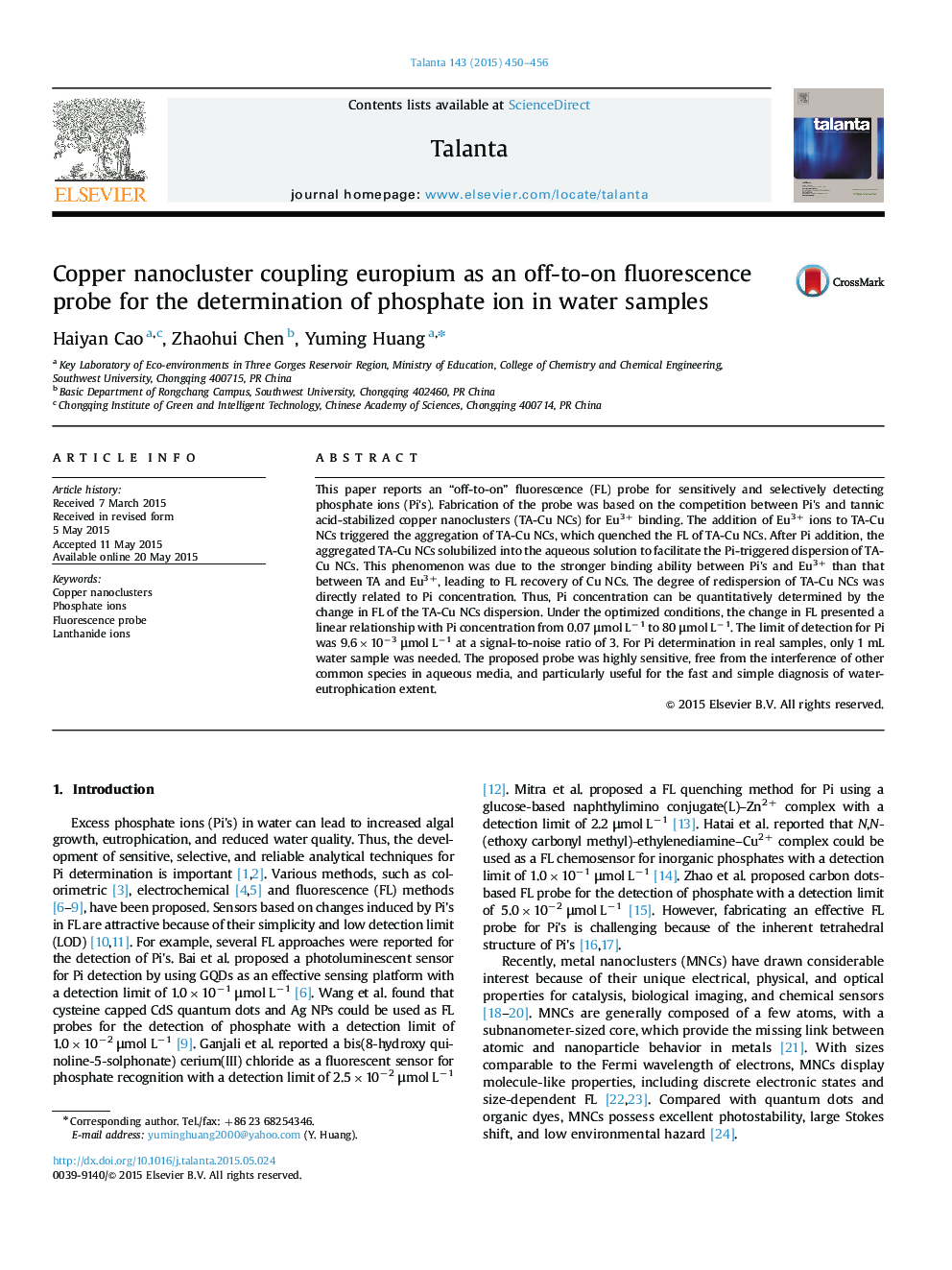| Article ID | Journal | Published Year | Pages | File Type |
|---|---|---|---|---|
| 1241909 | Talanta | 2015 | 7 Pages |
•A Cu NCs-based FL probe was proposed for sensitive and selective Pi sensing.•Pi sensing was based on the competition between Pi and Cu NCs for Eu3+ binding.•The Cu NCs coupling of Eu3+ shows the good reversible switching for Pi sensing.•The limit of detection for Pi is 9.6 nM.
This paper reports an “off-to-on” fluorescence (FL) probe for sensitively and selectively detecting phosphate ions (Pi's). Fabrication of the probe was based on the competition between Pi's and tannic acid-stabilized copper nanoclusters (TA-Cu NCs) for Eu3+ binding. The addition of Eu3+ ions to TA-Cu NCs triggered the aggregation of TA-Cu NCs, which quenched the FL of TA-Cu NCs. After Pi addition, the aggregated TA-Cu NCs solubilized into the aqueous solution to facilitate the Pi-triggered dispersion of TA-Cu NCs. This phenomenon was due to the stronger binding ability between Pi's and Eu3+ than that between TA and Eu3+, leading to FL recovery of Cu NCs. The degree of redispersion of TA-Cu NCs was directly related to Pi concentration. Thus, Pi concentration can be quantitatively determined by the change in FL of the TA-Cu NCs dispersion. Under the optimized conditions, the change in FL presented a linear relationship with Pi concentration from 0.07 μmol L−1 to 80 μmol L−1. The limit of detection for Pi was 9.6×10−3 μmol L−1 at a signal-to-noise ratio of 3. For Pi determination in real samples, only 1 mL water sample was needed. The proposed probe was highly sensitive, free from the interference of other common species in aqueous media, and particularly useful for the fast and simple diagnosis of water-eutrophication extent.
Graphical abstractFigure optionsDownload full-size imageDownload as PowerPoint slide
